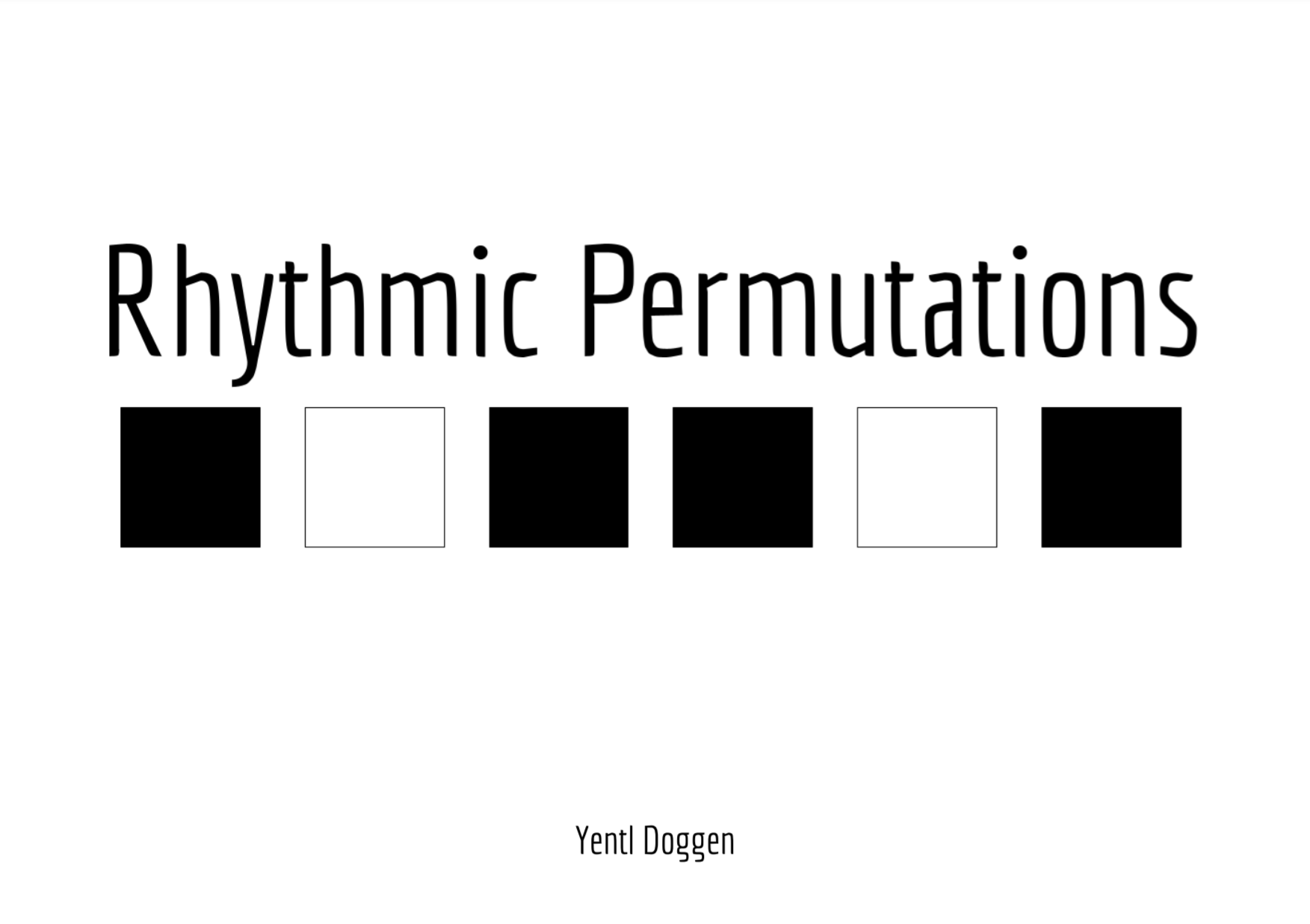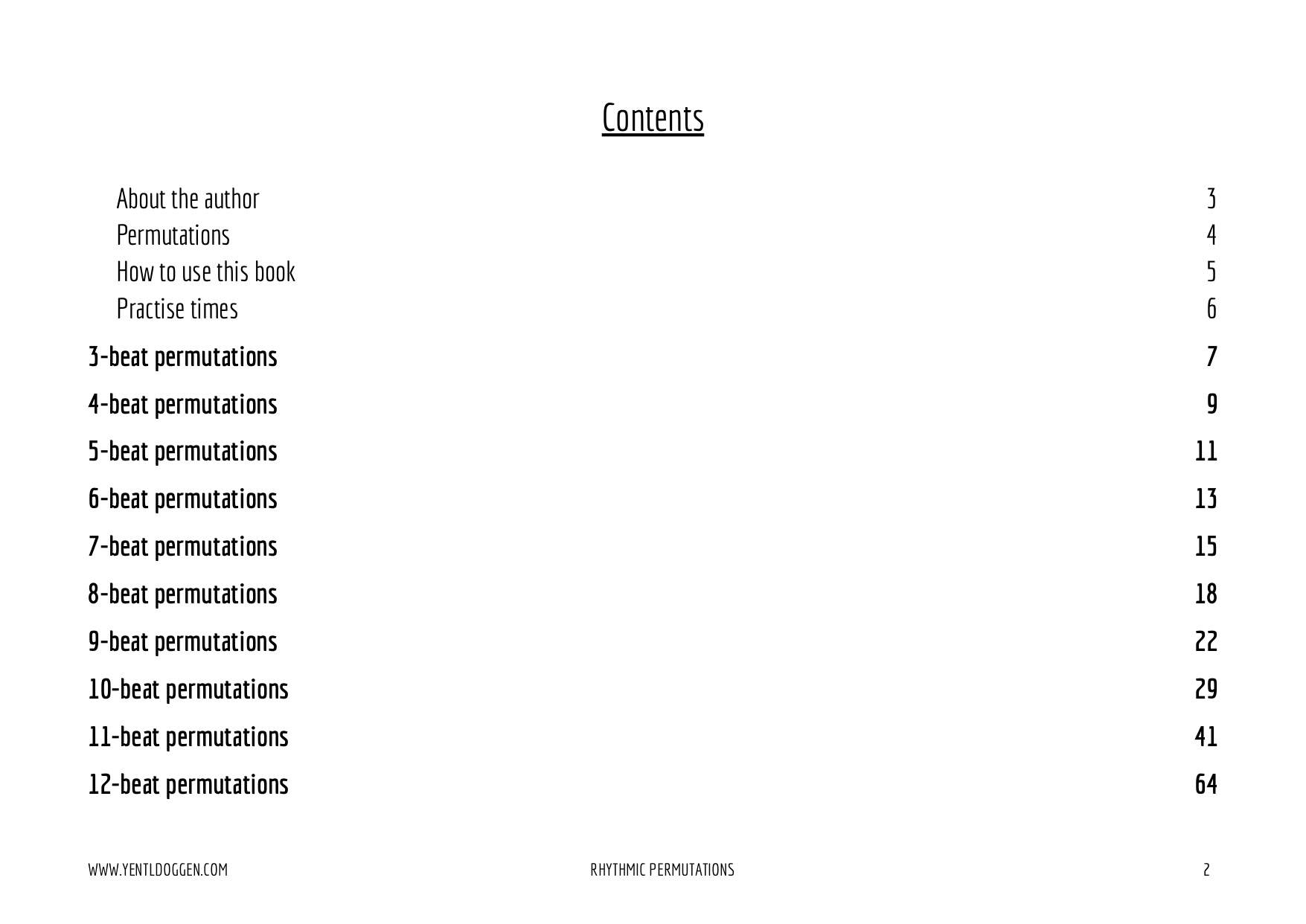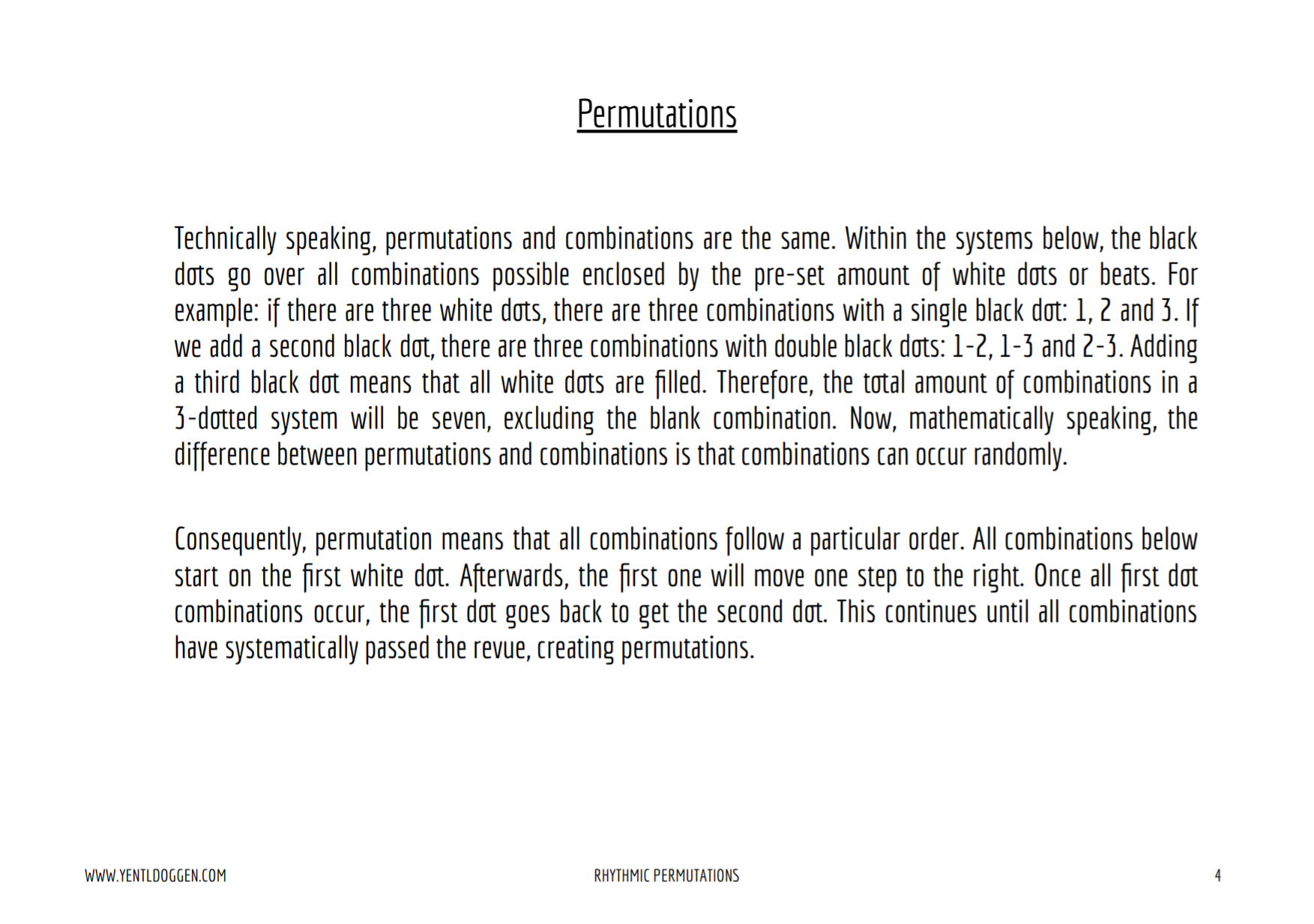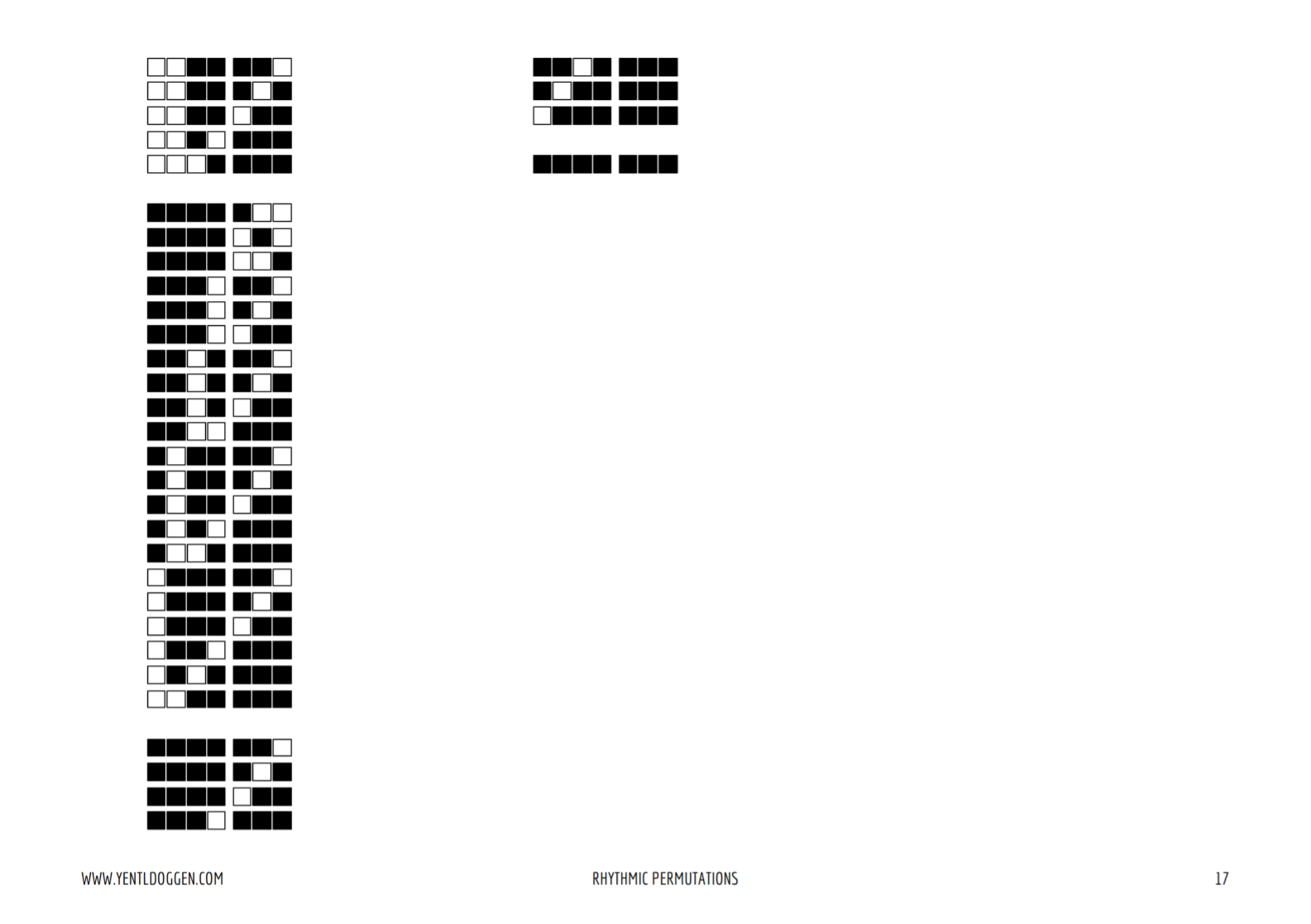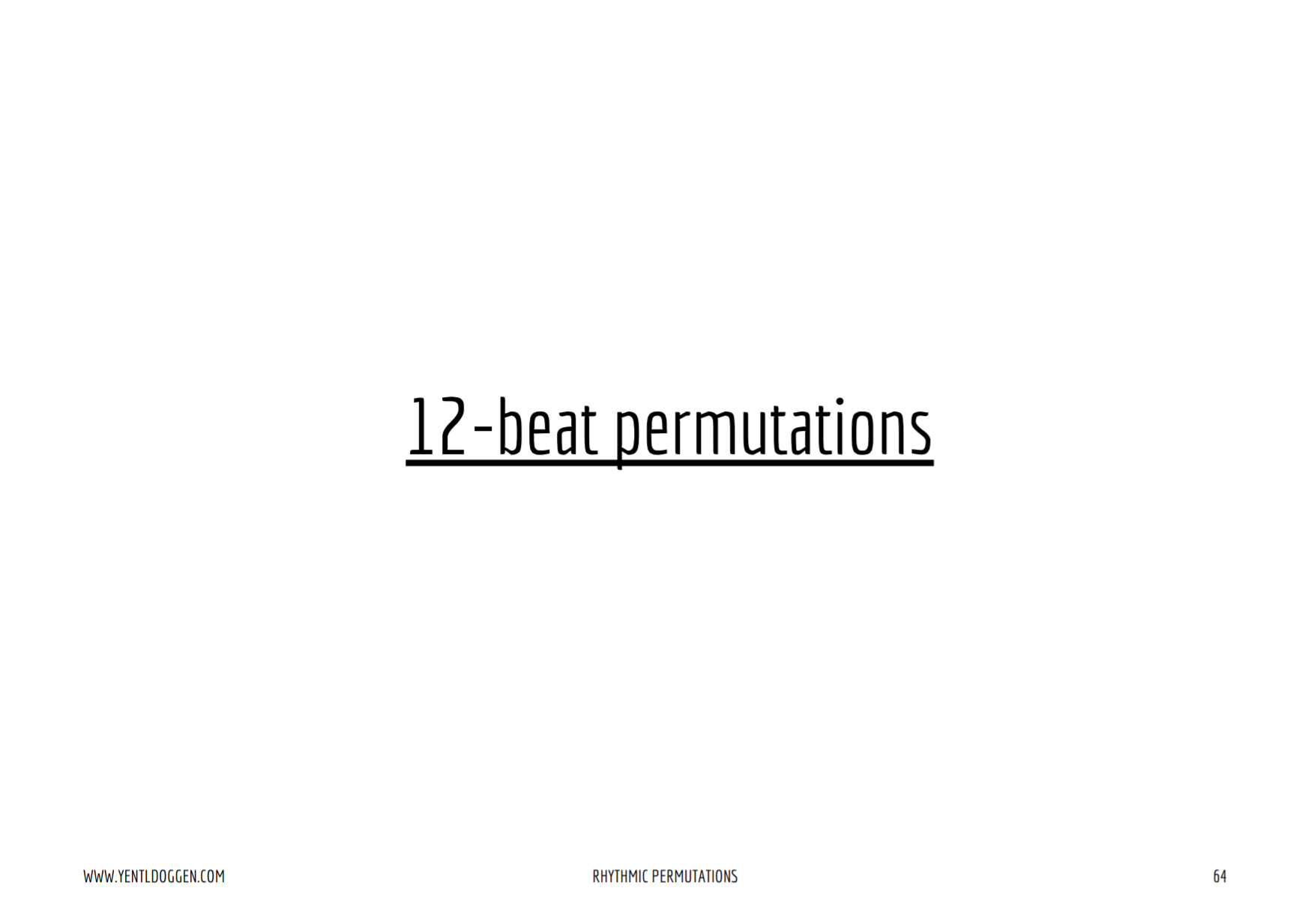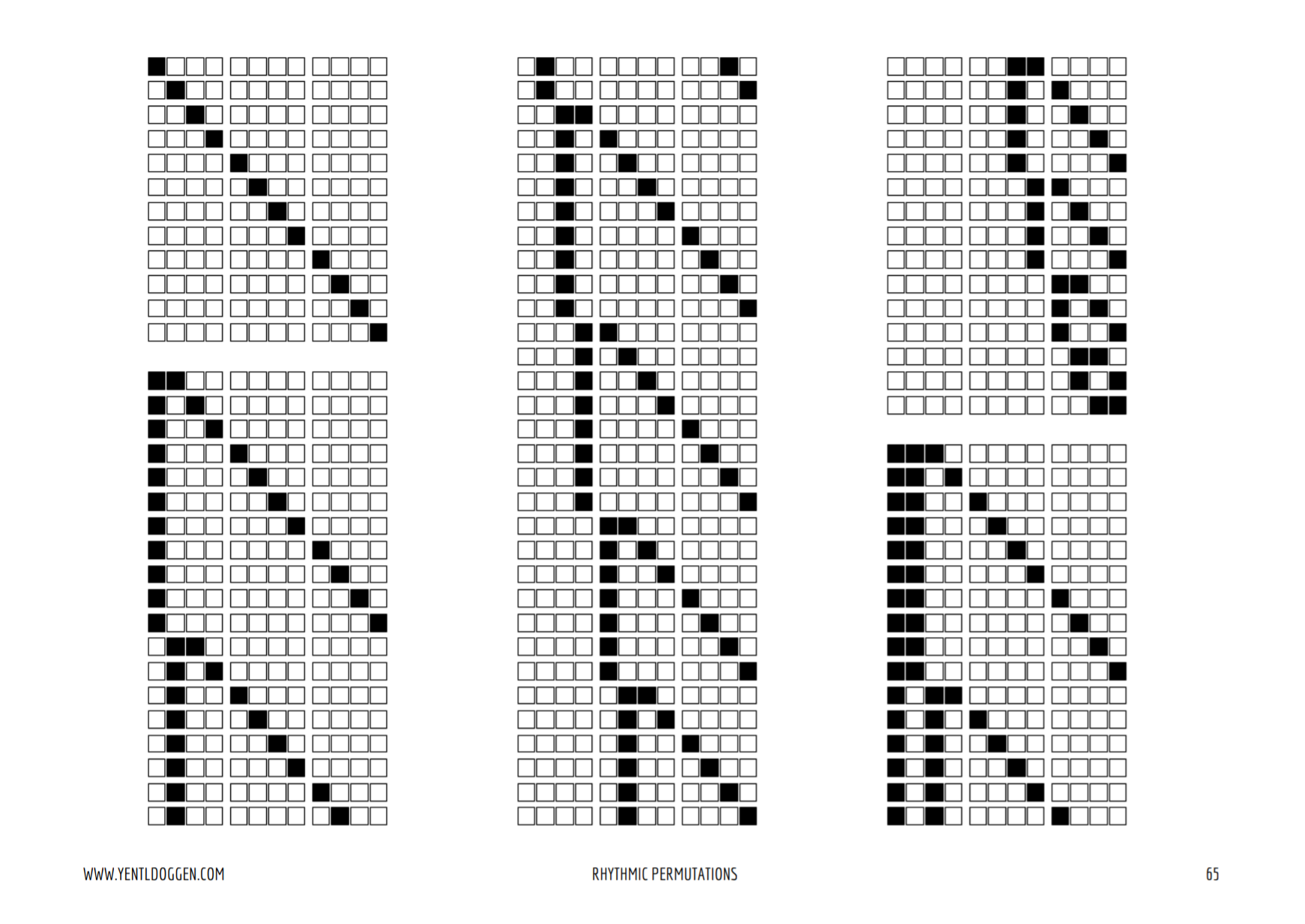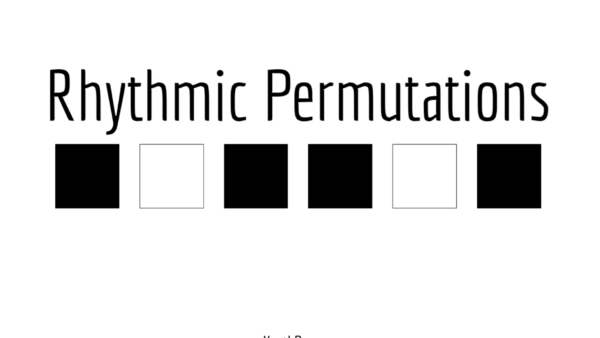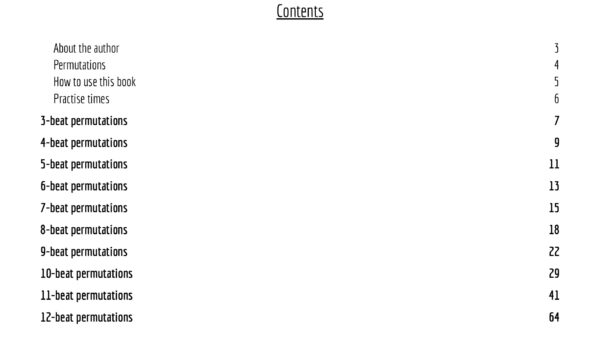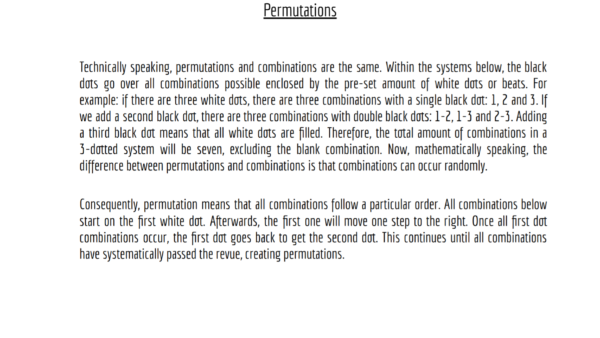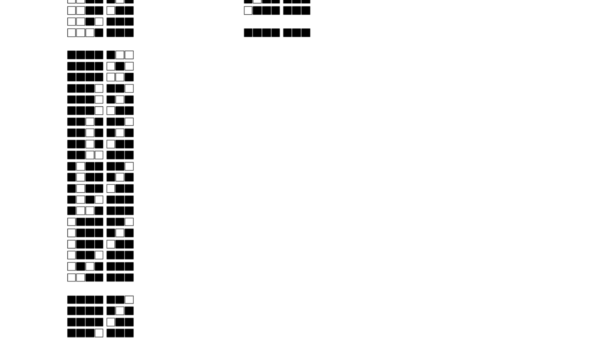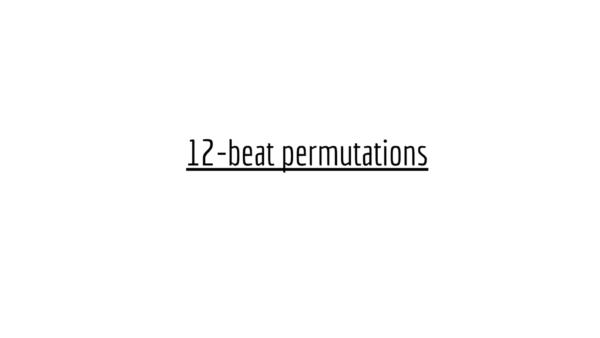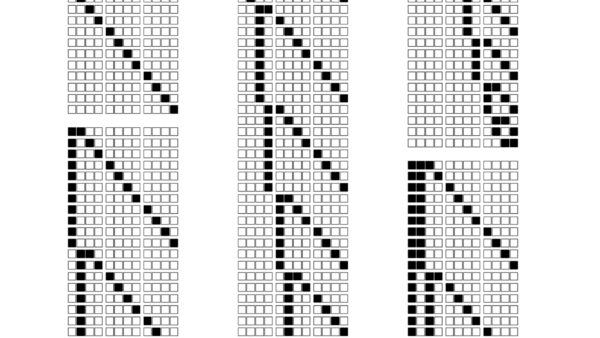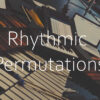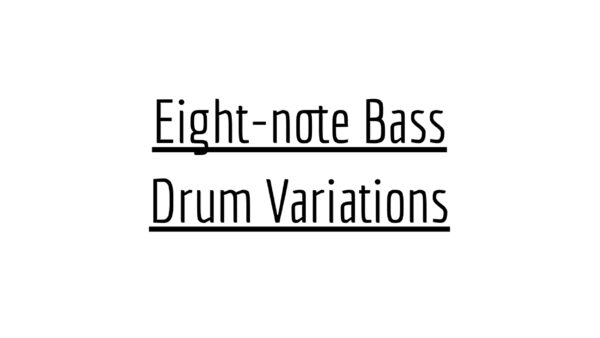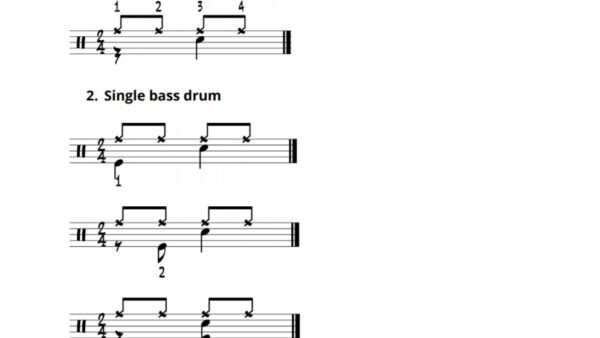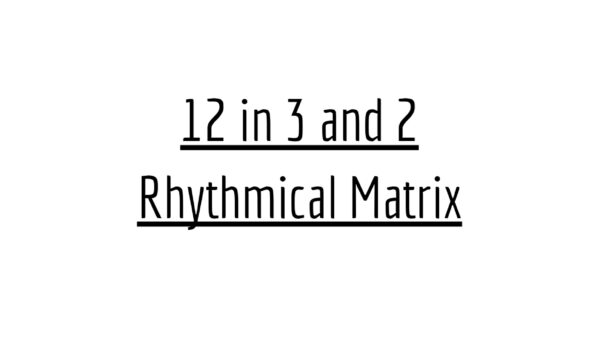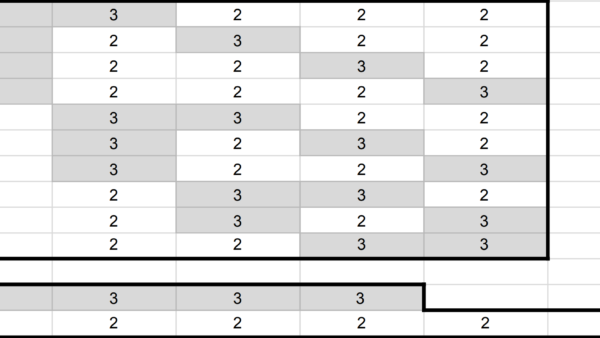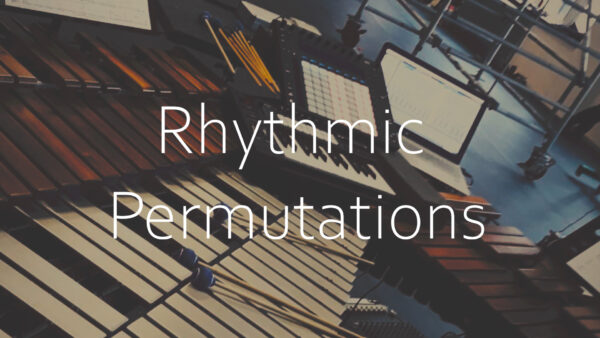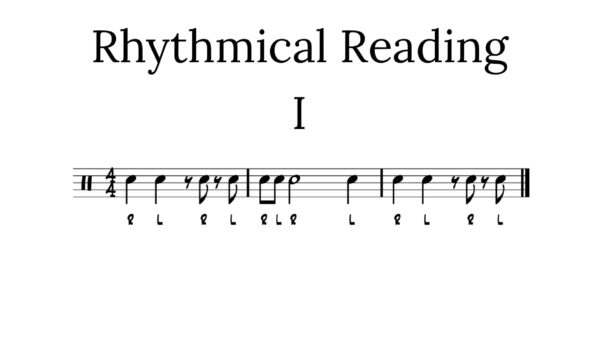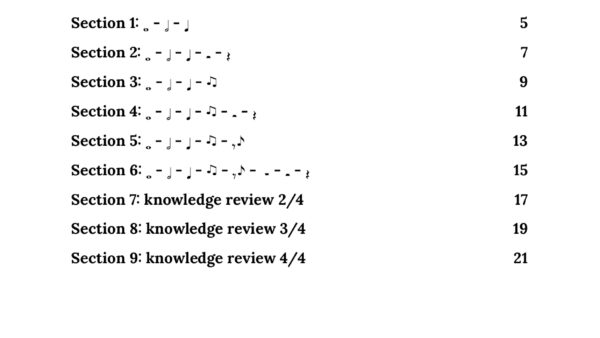Rhythmic Permutations – eBook | PDF download
€7,50
-> High-definition digital download of Rhythmic permutations (PDF).
Upon ordering, you get two (2) downloads valid for 365 days.
Rhythmic permutations is an eBook that logically orders all possible rhythmic combinations within a specific number of beats. Starting with 3-beat combinations, this book takes you through more than 8,174 combinations to the 12-beat combinations. It is the perfect book for rhythm studies, rhythm reading and even composition ideas.
About the eBook
The first chapter of the eBook starts with the 3-beat variations. Afterwards, the variations for 4, 5, 6, 7, 8, 9, 10, 11 and 12-beats follow. As a result, Rhythmical Permutations has 8,174 different rhythms divided over 107 pages, making it the perfect eBook for rhythmical- studies, exercises, and reading. It’s the rhythmical archive that, I think, lays an excellent foundation for advanced rhythm knowledge. But, once you dive deeper into this book and start experimenting, you will see it is not just an archive of different combinations. It is a book full of rhythmic possibilities.
There are many different ways of using this book. For example, the 8-beat combinations can be used as a bar full of 16th notes in 2/4, eight notes within 4/4 and even as eight quarter notes in 4/8. And that’s just the tip of the iceberg. Once you dive deeper into this book and start experimenting, you will see this is not just an archive of different combinations. It is a book full of rhythmic possibilities!
Rhythmic Permutations
My first instructional eBook, Rhythmic Permutations, isn’t much like any other book. It doesn’t have any classical music notation. In addition, I said instructional book and Rhythmic Permutations even lacks instructions. It is more a visualisation of the concept, permutations. There are plenty of books to write about the endless possibilities of this concept. But, besides my plan to regularly upload online drum lessons, that will be for a future book. For people familiar with rhythmic permutations, I like to say that it is a book full of visualised rhythmic possibilities. If you are not that familiar with permutations, the eBook logically orders all possible rhythmic combinations within a specific number of beats. White dots visualise all beats, and the black dot shows the rhythm itself. Not having any classical music notation is to not narrow the options down. The player can make his own subdivisions.
Permutations explained
Technically speaking, rhythmical permutations and combinations are the same. With this book’s systems, the black dots go over all combinations possible enclosed be the pre-set amount of white dots, aka beats. For example: if there are three beats, there are three combinations with a single black dot: beats 1, 2 and 3. If we add a second black dot, there are three combinations with double dots: beats 1-2, 1-3 and 2-3. Adding a third black dot means that all the white dots are full. Therefore, the total amount of combinations in the 3-beat system is seven, excluding the blank combination. The difference between combinations and permutations, mathematically speaking, is that combinations can occur randomly.
Consequently, permutation means that all combinations follow a particular order. All varieties in this eBook start on the first white dot. Afterwards, the first dot will move one step to the right each time. Once all first dot combinations occur, the first dot returns to get the second dot. This continues until all varieties have systematically passed the revue, creating permutations.


